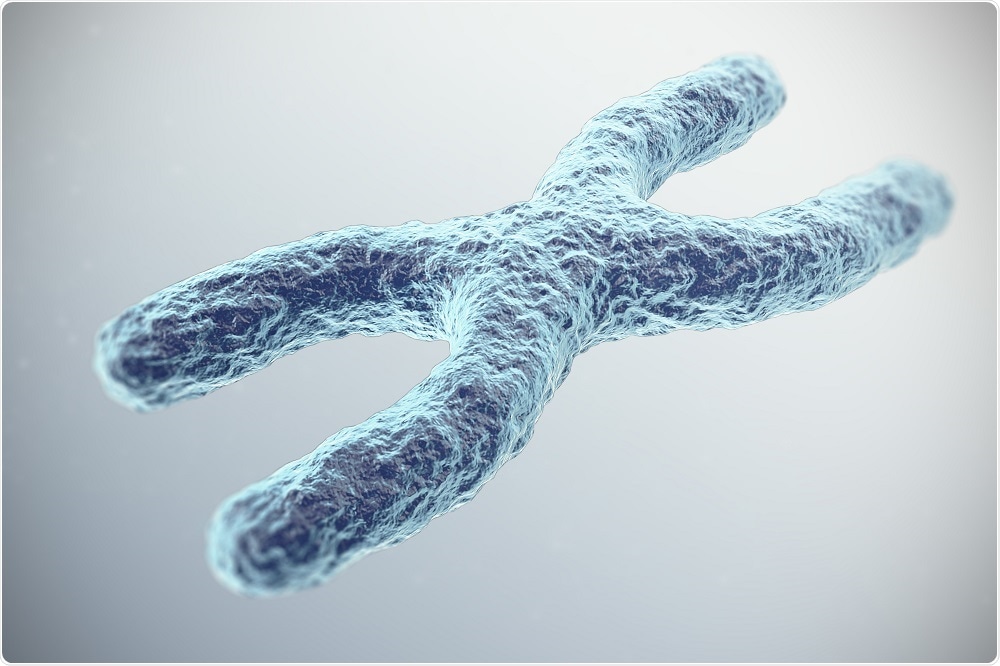Researchers at Massachusetts General Hospital have discovered that the structural protein SMCHD1 is required to prevent genes from both X chromosomes being expressed in female mammals.
 Image Credit: Rost9 / Shutterstock
Image Credit: Rost9 / Shutterstock
Mammals have two copies of each chromosome; one from the mother and one from the father. These have to be folded in order to fit within the cell nucleus. This process also involves the categorisation of chromosomes into either the active A compartment or the inactive B compartment.
The A compartment contains the many actively transcribed genes, whereas the B compartment contains the few genes that are rarely, if ever, transcribed. The A and the B compartment s are both further organised according to topologically associated domains (TADs).
Female mammals inherit two X chromosomes and it is important that only one copy of each gene is expressed. Thus, during the early stages of embryonic development one of the X chromosomes is inactivated.
It is known that this is achieved by the large RNA molecule, Xist. Xist travels across the chromosome causing it to fold into two large structural domains.
These domains subsequently merge into a structure that does not have the compartmentalisation described above. Consequently, the genes on that chromosome cannot be transcribed. However, little is known about the factors that regulate the process of X chromosome inactivation.
A family of structural proteins known as SMC proteins are known to regulate chromosome conformation. Furthermore, inactivated X chromosomes have been shown to have high levels of the SMCHD1 protein. It was thus hypothesized that this protein may play a role in X chromosome inactivation.
The research team demonstrated that the presence of SMCHD1 in mouse cells was needed to suppress the transcription of a large subset of genes on the inactive X chromosome.
They also identified that the critical role performed by SMCHD1 was to induce the inactive X chromosome to adopt a conformation that blocks the expression of its genes. The SMCHD1 protein influenced chromosome folding by preventing Xist from spreading across the chromosome.
As a result, the two large domains did not merge into the typical compartment-less inactive X chromosome structure. In the absence of SMCHD1, the two compartments persisted and about 40% of the genes on the 'inactive' chromosome were expressed.
We showed that the SMCHD1 protein influences gene expression by regulating the folding of the inactive X chromosome into its unique conformation, which prevents expression of its genes.
Mutations in SMCHD1 are associated with several human diseases, including a severe form of muscular dystrophy and a syndrome in which an infant's nose fails to develop.”
Chen-Yu Wang, Lead Author
Senior author Jeannie T Lee, added "The knowledge gained could also be used to reactivate the inactive X chromosome to treat certain diseases, such as the neurodevelopmental disorders Rett syndrome and CDKL5 disorder".
Ongoing research by the team aims to further elucidate the process by which SMCHD1 merges the domains and how disease-associated SMCHD1 mutations affect X chromosome expression.
Ultimately, it is hoped that it will be possible to selectively silence or activate specific X-linked genes as a means of treating diseases caused by aberrant expression of X chromosome genes.
Our finding suggests that misfolded chromatin - the chromosomal structure consisting of DNA wrapped around proteins called histones - may play a role in those diseases."
Chen-Yu Wang, Lead Author